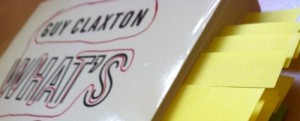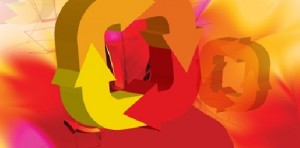Hase & Kenyon (2007) self-directed learning
Hase, S., & Kenyon, C. (2007). Heutagogy: A child of Complexity Theory. complicity: An International Journal of Complexity and Education, 4(1), 111-118.
Hase and Kenyon argue that the notions of pedagogy and andragogy are deficient. Teachers merely facilitate students to acquire knowledge and skills, which they maintain is not learning. Acquiring knowledge and skills allows students to be competent to recall and use that knowledge and those skills in familiar situations. In contrast, learning demands change. However, we need to remember that comfort hinders change. Change occurs in response to distressful needs (and intense desires). Hase and Kenyon define learning as an emergent and integrative process that changes behaviour, knowledge, understanding and becomes incorporated into people’s existing attitudes and values. Learning empowers students to be capable to react and adapt to unfamiliar and unanticipated situations drawing on all their holistic knowledge, skills and values. Hase and Kenyon define capability as beyond competency: being able to adapt to unknown and changing contexts, having appropriate values to work collaboratively, and knowing how to learn.
Pedagogy and andragogy appear to remain teacher-centered with little micro or macro involvement from learners. Curricula are inflexible, which is disappointing because “it is impossible to predict the extent and effect of bifurcation”, i.e. separation of planned curricula and learners’ changing needs. In contrast, heutagogy is self-determined learning. Learner-centered and learner-directed learning which occurs as result of personal experiences. Students become the key drivers and designers of learning processes, activities, objectives and assessments. Heutagogy requires a living flexible curriculum that is able to change as students learn.
Hase and Kenyon recommend action research and action learning as meta-methodologies to empower learners to experiment with real experiences in real world contexts. Action research and action learning provide flexibility to understand unpredictable and complex social phenomena, give ownership and control of the learning to the students, and can also be trialled and tested in subsequent cycles. Alongside action-learning, teachers need to provided personal coaching.
Adaptive systems (Bertanafly, 1950; Akoff & Emery, 1972; Emery, 1971, 1986; Emery & Trist, 1965) and Complexity Theory are worth investigating in relation to learning (Davis & Sumara 1997; Doll 1989; Doolittle, 2000). At the time of writing, Hase and Kenyon were still researching the usefulness of heutagogy as a concept, and questioning how learning occurs in complex adaptive systems and how these systems harness and facilitate learning.



